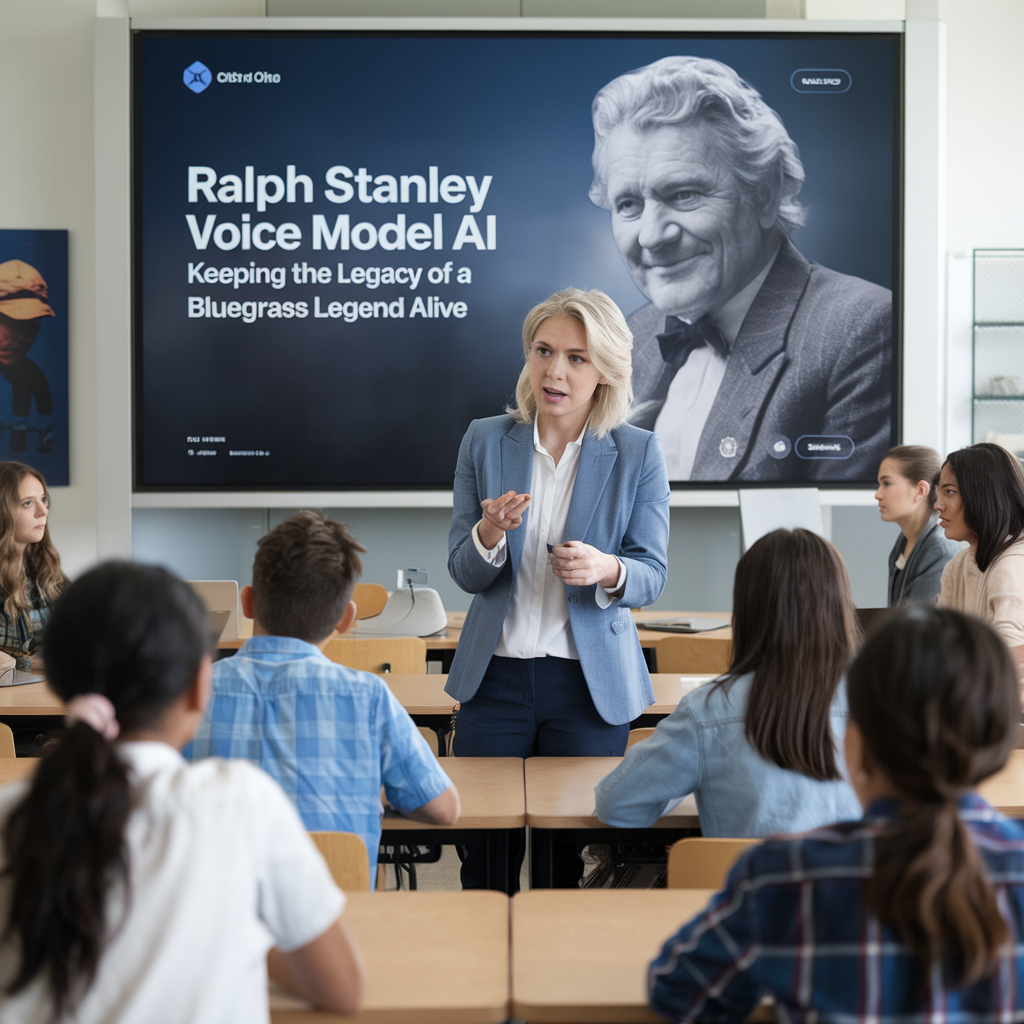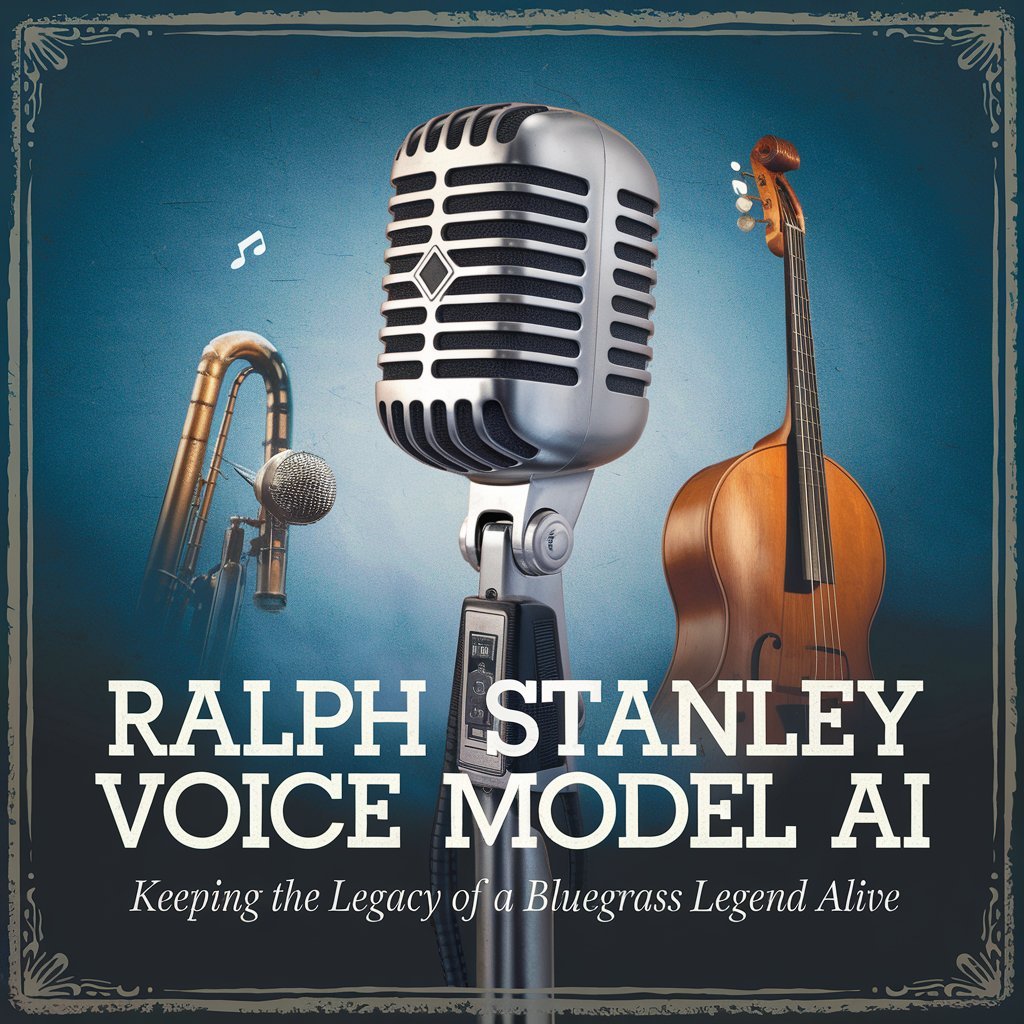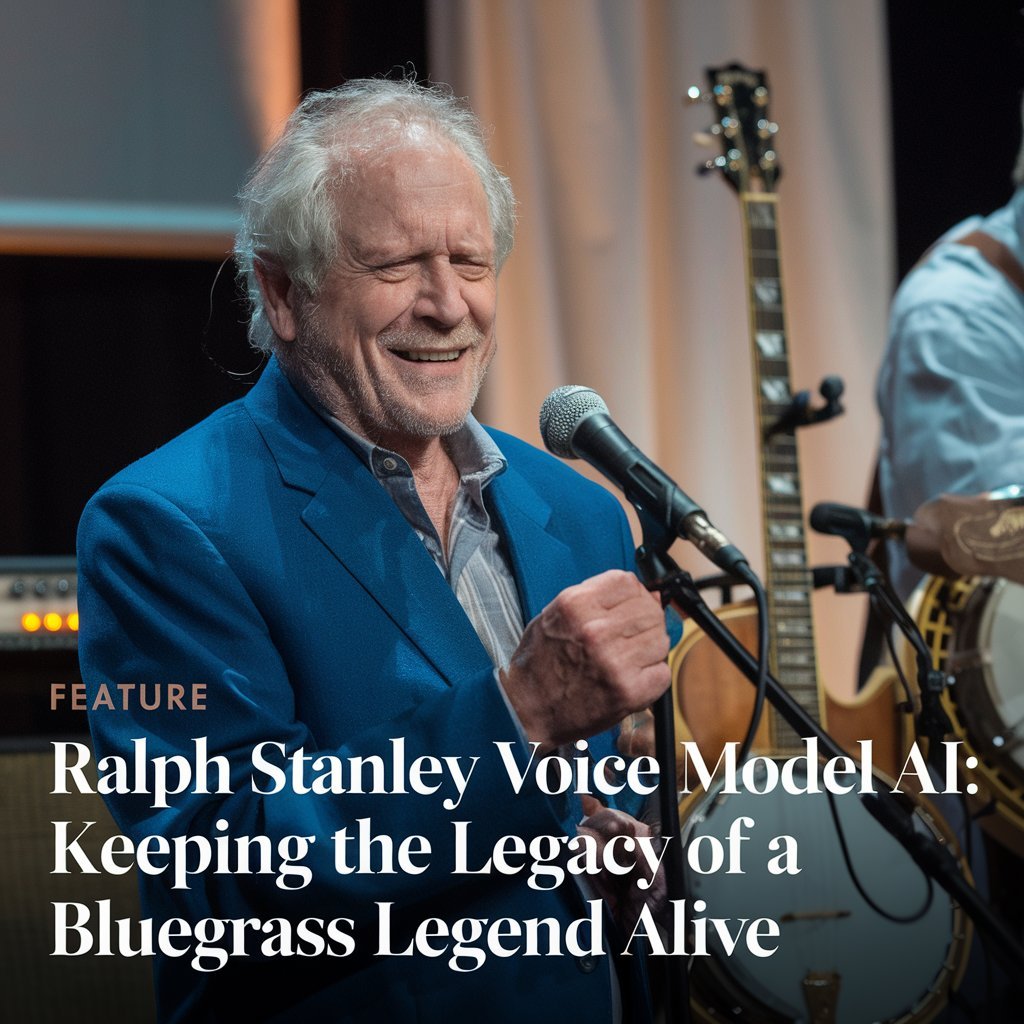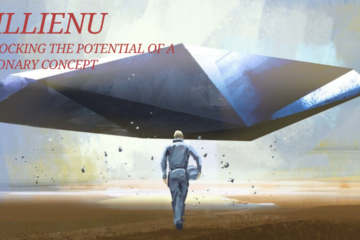Introduction
The Ralph Stanley Voice Model AI represents a groundbreaking technological achievement, designed to digitally replicate the inimitable voice of Ralph Stanley, a pioneer of bluegrass music. Through advanced AI-driven voice replication, this innovative tool captures the tonal qualities, emotional depth, and unique inflections that defined Stanley’s sound. It not only keeps his legendary voice alive but also introduces it to new generations, ensuring that the essence of bluegrass continues to thrive.
Artificial intelligence has revolutionised industries worldwide, and the music realm is no exception. From composing melodies to enhancing live performances, AI has redefined creative possibilities. The development of tools like the Ralph Stanley Voice Model AI highlights how technology can preserve cultural legacies while offering fresh ways to engage with them.
By immortalising Ralph Stanley’s voice, this AI model serves as both a technical marvel and a cultural milestone. It is particularly invaluable for educators, music enthusiasts, and fans who wish to explore Stanley’s artistry in immersive and innovative ways.
Table of Contents
What is the Ralph Stanley Voice Model AI?
The Ralph Stanley Voice Model AI is a sophisticated artificial intelligence system crafted to emulate the distinctive vocal style of Ralph Stanley. Using advanced machine learning techniques, this AI generates speech or music that closely mirrors the nuances of Stanley’s voice, including its distinct tone, phrasing, and emotional resonance. The model achieves this by being trained on an extensive collection of Stanley’s recordings, enabling it to produce outputs that feel authentic and true to his legacy.

Utilising the Ralph Stanley Voice Model AI in Music and Education
Revitalising Music Production
An innovative application of the Ralph Stanley Voice Model AI lies in its use for music production. Today’s producers can effortlessly incorporate Stanley’s voice into modern tracks, merging classic bluegrass sounds with contemporary musical styles. This not only keeps Stanley’s artistry relevant but also introduces his sound to audiences who may not have encountered bluegrass before.
Enhancing Music Education
In educational settings, the AI model offers an invaluable resource for teaching the intricacies of bluegrass music. By analysing and experiencing Stanley’s vocal techniques firsthand, students can gain a deeper appreciation of the genre. Music educators can use this tool to preserve and share the distinct artistry of bluegrass with future generations.
Virtual Performances and Posthumous Albums
The Ralph Stanley Voice Model AI creates exciting opportunities for both live and virtual performances. Fans can experience real-time renditions of Stanley’s music, complete with his unmistakable voice. Furthermore, the AI allows for the creation of posthumous albums, enabling new recordings to emerge long after an artist’s passing. This capability demonstrates the profound impact AI can have on extending the legacy of musicians.
Personal Fan Experiences
For fans, the AI provides a distinct opportunity to experience and engage with Ralph Stanley’s iconic voice. From personalised greetings to custom performances, the model creates deeply personal and memorable experiences. It transforms Stanley’s voice from a historical artefact into an interactive and meaningful part of everyday life.
Understanding the Functionality of the Ralph Stanley Voice Model AI
Central to the Ralph Stanley Voice Model AI is an advanced combination of machine learning and deep learning technologies. By processing hours of high-quality recordings, the AI learns to replicate the nuances of Stanley’s voice. Key elements like pitch, tone, phrasing, and emotional expression are analysed and incorporated into the model.
The Process of Voice Cloning
Developing the Ralph Stanley Voice Model AI required an intricate voice cloning procedure. Engineers collaborated with AI developers to train the system using a vast library of Stanley’s recordings. The AI underwent rigorous training, fine-tuning its algorithms to mimic the intricacies of Stanley’s vocal style. The result is a digital voice that can perform tasks ranging from singing classic bluegrass tunes to delivering spoken-word performances, all in Stanley’s signature tone.
Why the Ralph Stanley Voice Model AI is Unique
The Ralph Stanley Voice Model AI is unique in its focus on preserving the sound of a specific genre and artist. Unlike generalised AI voice models, this tool prioritises authenticity and cultural significance, capturing the soul of bluegrass music. By preserving Stanley’s voice, it not only honours his contributions but also serves as a blueprint for similar projects aimed at other iconic artists.
How PlayHT Creates the Ralph Stanley Voice Model AI
The process of developing a voice model like the Ralph Stanley Voice Model AI involves sophisticated deep-learning algorithms and meticulous data preparation. Here’s how it’s done:
Data Collection
A wide range of Ralph Stanley’s recordings are gathered to capture the full spectrum of his vocal expressions.
Audio Preparation
These recordings are cleaned and enhanced to ensure clarity, preserving the nuances of his voice.
Audio Analysis
Cutting-edge software examines essential vocal characteristics, including pitch, tone, rhythm, and phrasing.
Model Training
Using machine learning, the AI model is trained to replicate Stanley’s voice by imitating its unique characteristics.
System Integration
The trained model is combined with text-to-speech, speech-to-speech, or text-to-song systems, enabling versatile applications.
Quality Assurance
The final voice model undergoes rigorous testing to ensure it faithfully reproduces Stanley’s voice.
Ethical Considerations in AI Voice Replication
Replicating the voices of late artists, such as Ralph Stanley, brings up important ethical concerns. One major concern is consent, as the artist is no longer able to approve or reject the use of their voice. Developers must work closely with the artist’s estate to ensure that the AI’s applications honour their legacy.
Balancing innovation with authenticity is essential. While the Ralph Stanley Voice Model AI offers exciting creative opportunities, it is important to avoid undermining the original artistry. Striking this balance ensures the ethical integration of AI into the music industry, respecting both the artist’s work and their fans.
Challenges and Opportunities in Bluegrass Music
Bluegrass, a genre deeply rooted in tradition, faces unique challenges in adapting to technological advancements like AI. While purists may view the Ralph Stanley Voice Model AI as a threat to the authenticity of the genre, innovators see it as a gateway to creative exploration and growth.
Broadening Bluegrass Audiences
The AI model provides an unprecedented opportunity to expand the audience for bluegrass music. By making Stanley’s voice accessible in novel formats and settings, the technology introduces the genre to listeners who might not have encountered it otherwise. This could ignite a revival of interest in bluegrass, cementing its relevance in today’s musical landscape.
Preserving Tradition While Embracing Change
The debate between tradition and innovation has always been central to the evolution of music. The Ralph Stanley Voice Model AI exemplifies how technology can breathe new life into a genre without compromising its roots, ensuring a harmonious coexistence between the old and the new.
The Transformative Impact of AI on Bluegrass Music: Exploring the Ralph Stanley Voice Model AI
Bluegrass music, with its deep historical roots and rich cultural significance, is undergoing a transformation as technological advancements reshape the music industry. One notable innovation is the Ralph Stanley Voice Model AI, which blends traditional bluegrass elements with cutting-edge technology. This AI tool offers an innovative avenue to revitalise the genre, making it more accessible to new audiences while preserving its legacy in a rapidly evolving cultural landscape.
The Dual Perspectives on AI in Bluegrass
The introduction of AI into bluegrass has sparked a lively debate within the community. Purists often view tools like the Ralph Stanley Voice Model AI as a threat to the genre’s authenticity. They fear that integrating AI might dilute the traditional values that define bluegrass music. Conversely, proponents of innovation see this technology as a creative catalyst, capable of broadening the genre’s horizons and ensuring its relevance in a modern context.
This dichotomy underscores a long-standing tension in the evolution of music: balancing the preservation of tradition with embracing transformative change. This debate is particularly significant in bluegrass, where the authenticity of live instrumentation and heartfelt storytelling is central to its identity.
Expanding Bluegrass’s Reach with AI
One of the most promising aspects of the Ralph Stanley Voice Model AI is its ability to expand bluegrass’s reach beyond its traditional audience. By recreating Ralph Stanley’s iconic voice in various formats, the AI tool can introduce the genre to listeners unfamiliar with its rich history. This accessibility could spark a resurgence in bluegrass, drawing in younger generations and music enthusiasts who might otherwise overlook the genre.
The Ralph Stanley Voice Model AI also allows artists and producers to experiment creatively, blending the traditional sounds of bluegrass with contemporary styles. This innovation opens up endless possibilities for musical exploration, helping bluegrass evolve without losing its essence.
AI in Music: Lessons from Other Projects
The Ralph Stanley Voice Model AI is part of a broader movement of integrating artificial intelligence into the music industry. Successful initiatives like OpenAI’s MuseNet and Google’s Magenta project demonstrate AI’s ability to compose original music across multiple genres. These projects highlight the versatility of AI and its potential to push musical boundaries.
Similarly, AI voice models replicating legendary artists like Frank Sinatra and Elvis Presley offer valuable insights into both the potential and challenges of this technology. While these models create new opportunities for reimagining iconic voices, they also raise important ethical questions about authenticity and the treatment of original works. These case studies emphasise the need for responsible development and use of AI in music.
Case Studies: The Evolution of AI in Music
The Ralph Stanley Voice Model AI isn’t the only instance of AI making waves in the music industry. Projects like OpenAI’s MuseNet and Google’s Magenta demonstrate how AI-driven tools can compose original music across various genres, showcasing the incredible versatility of this technology.
Similarly, other AI voice models that replicate legendary artists like Frank Sinatra and Elvis Presley provide valuable insights into the opportunities and challenges of this emerging field. While these tools enable the creation of fresh music, they also spark debates about authenticity and ethical considerations. The lessons learnt from these projects underscore the importance of developing AI responsibly to balance innovation with respect for the original artists.
Looking ahead, the integration of AI into music promises to go beyond replication. Future projects will likely delve into unexplored genres, artists, and applications, pushing the boundaries of music creation even further.
The Future of the Ralph Stanley Voice Model AI and AI in Music
As AI technology continues to evolve, the possibilities for its application in music are virtually limitless. The Ralph Stanley Voice Model AI serves as a pioneering example of how voice replication can preserve a musical legacy while driving innovation. Future advancements in AI voice modelling could lead to even more sophisticated tools capable of adapting to various musical genres and styles.
Emerging trends suggest that AI-generated music will play an increasingly central role in the industry. From crafting entirely new compositions to reinterpreting classics, AI is poised to redefine how music is created and consumed. For bluegrass, this means a unique opportunity to innovate while honouring its roots, ensuring that the genre thrives in the modern era.

FAQs About Ralph Stanley Voice Model AI
What is the Ralph Stanley Voice ModelAI?
It is an AI tool designed to replicate Ralph Stanley’s iconic voice,utilisingg machine learning to preserve and recreate his distinct bluegrass sound.
How does it contribute to bluegrass preservation?
By introducing Stanley’s music to modern audiences and educational contexts, the AI ensures that bluegrass remains relevant, potentially sparking renewed interest in the genre.
Can the AI generate new songs featuring Ralph Stanley’svoice?
Yes, it can create new compositions that blend traditional bluegrass elements with contemporary styles, opening up fresh avenues for creative exploration.
How is this AI different from other voice models?
Its focus on authenticity and cultural preservation sets it apart. Unlike generic AI tools, it specifically honours Ralph Stanley’s legacy, ensuring his contributions to bluegrass are celebrated.
What ethical concerns does the AIraise?
Public reception varies, with some embracing its creative potential and others questioning its impact on traditional artistry and the authenticity of musical expression. Ethical considerations, including consent and respect for the original artist, remain crucial.
Conclusion: Balancing Innovation with Tradition
The Ralph Stanley Voice Model AI is a testament to the transformative potential of artificial intelligence in music. By preserving and extending Stanley’s legacy, this tool not only honours a cultural icon but also invites a broader conversation about the role of technology in the arts.
As AI continues to redefine the music landscape, balancing innovation with tradition will be critical. Ethical considerations—such as authenticity, cultural sensitivity, and consent—must guide the development of such tools to ensure they enhance, rather than detract from, our musical heritage.
By embracing these principles, the Ralph Stanley Voice Model AI exemplifies how technology can celebrate and enrich the legacies of artists, ensuring their influence resonates with future generations.
For any kind of updates please visit Dirtyship



